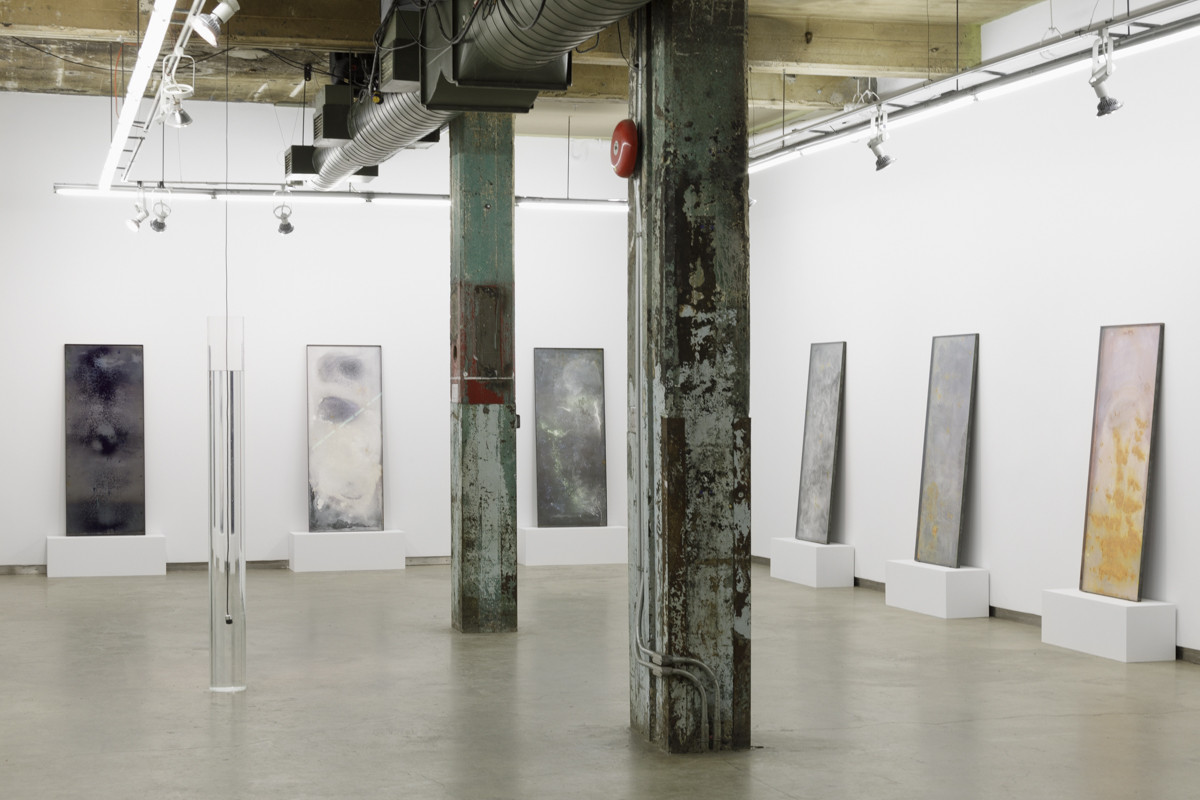

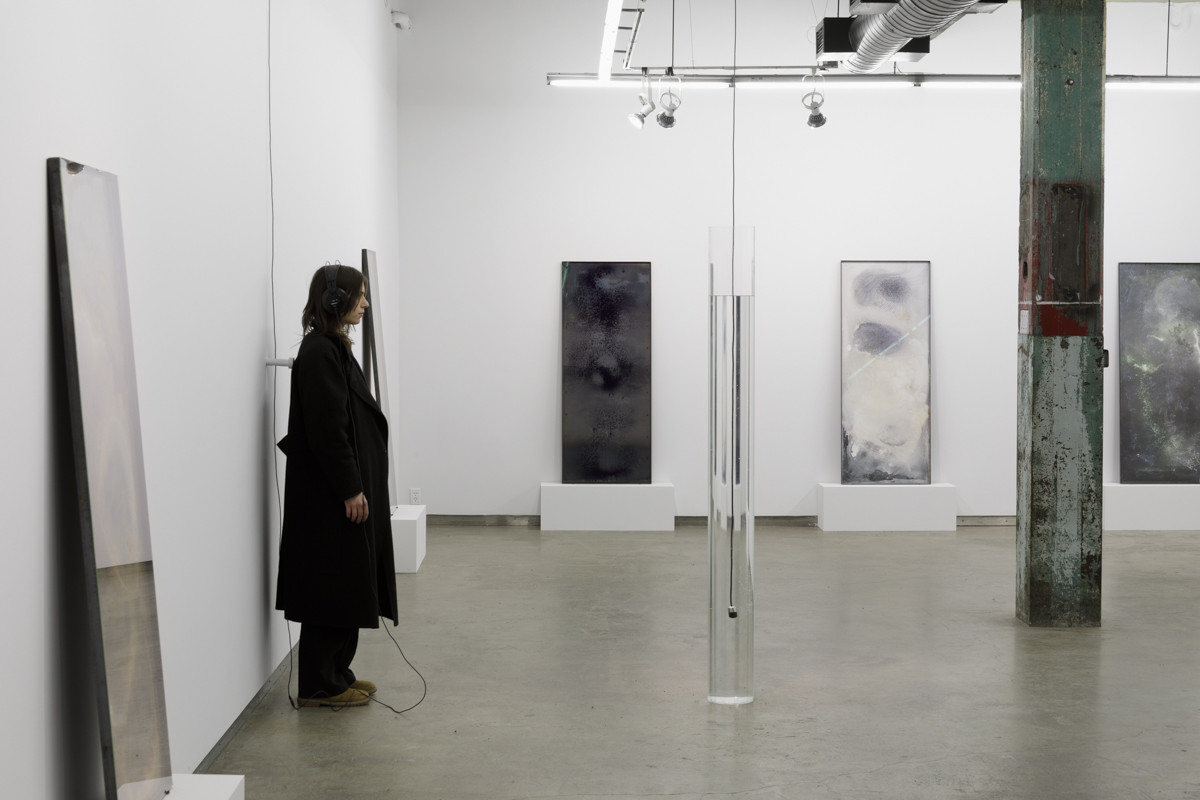
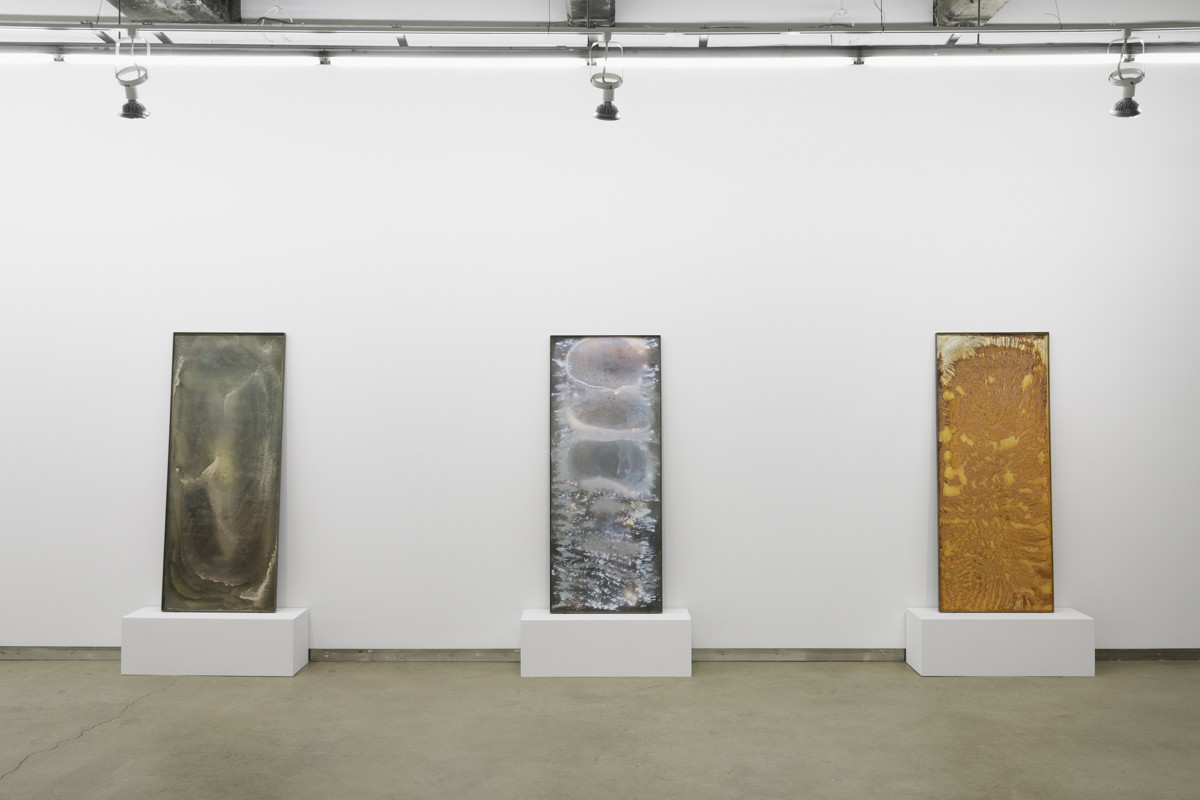
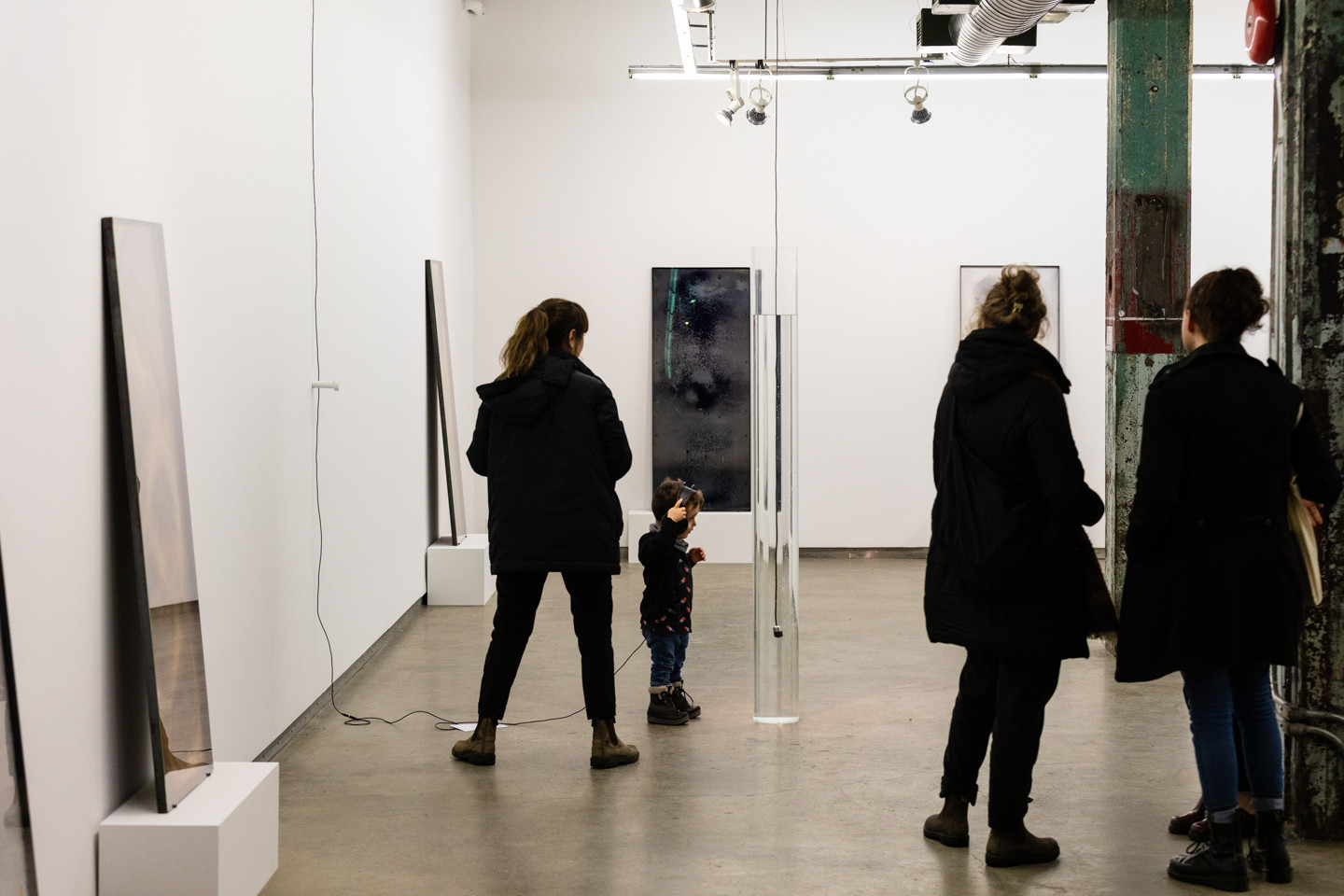
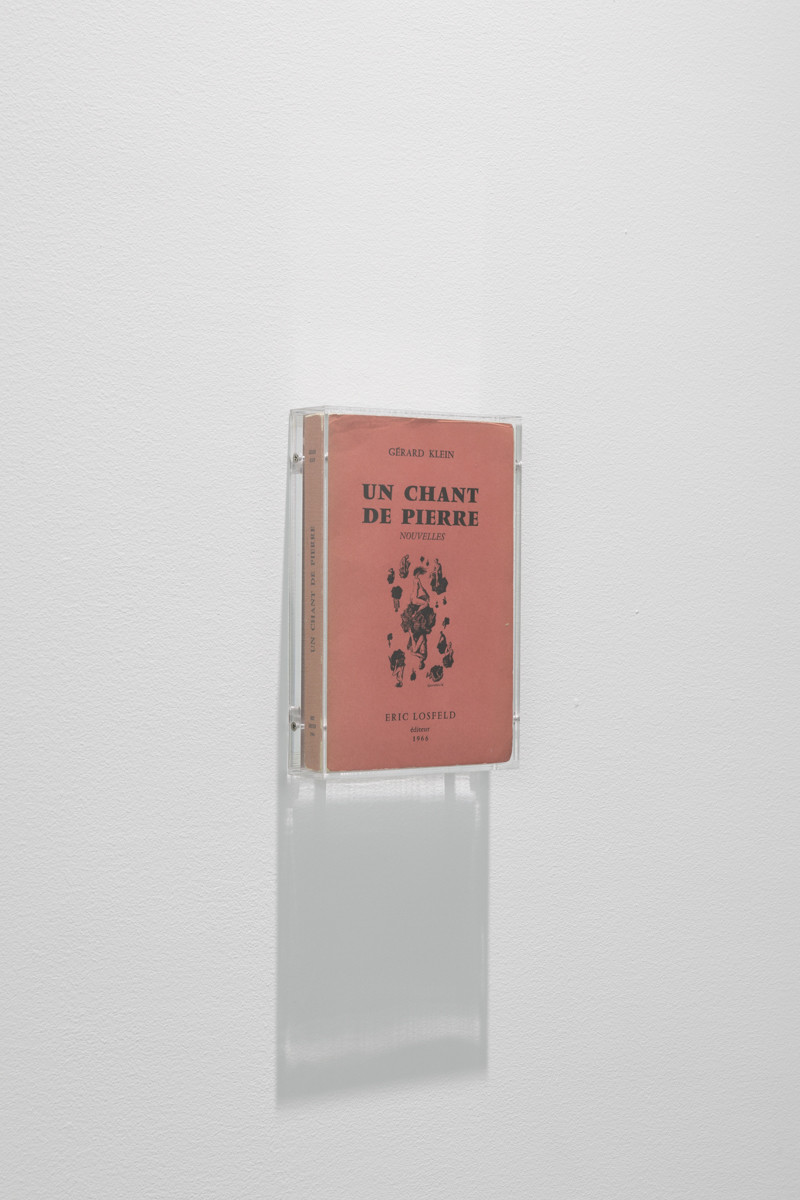
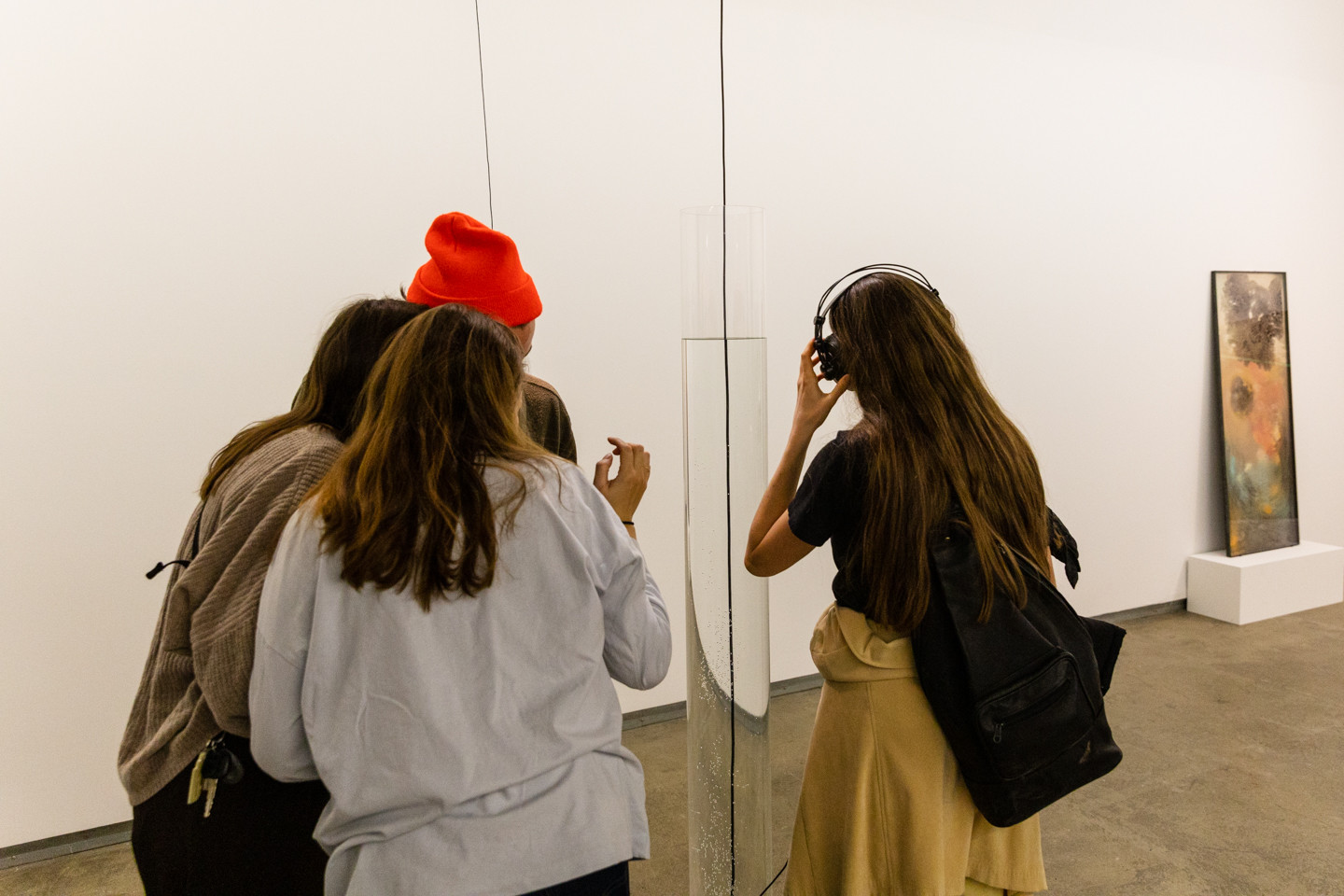
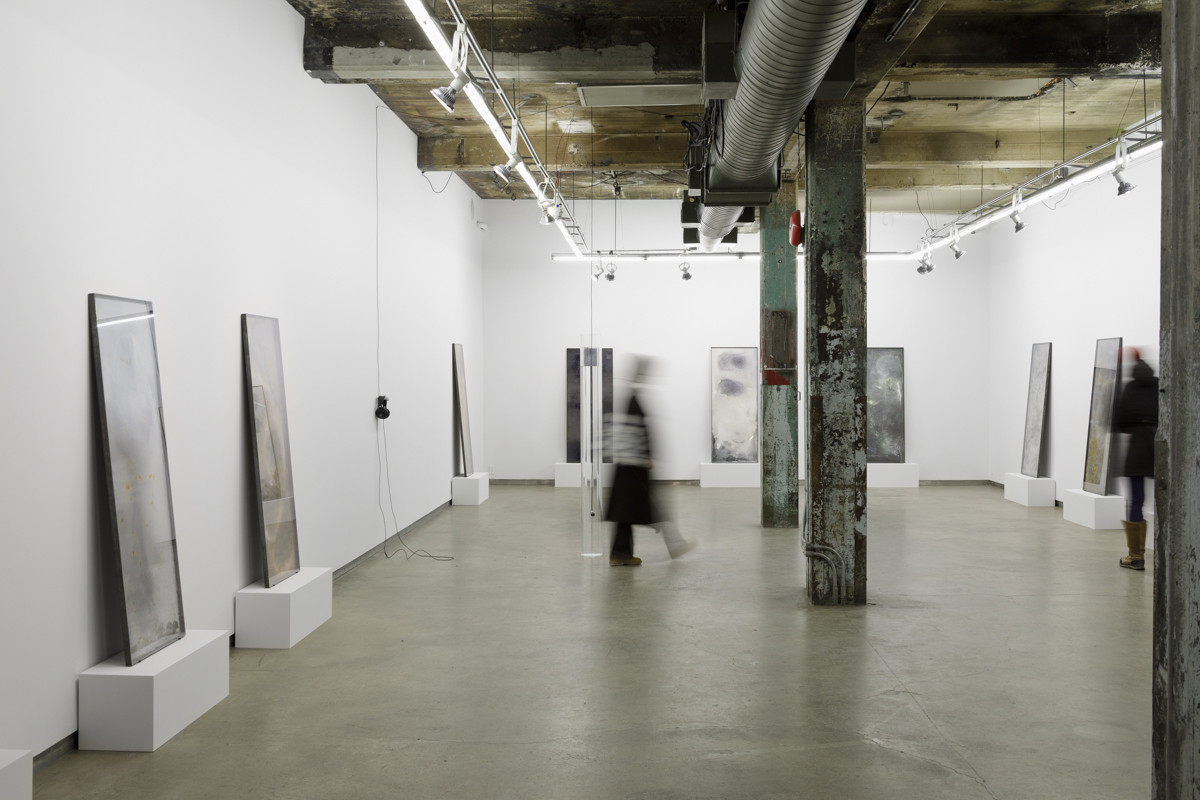
In response to increasingly noisy environments, artist Sandra Volny probes the tenuousness of silence so as to reveal the background sounds and echoes that fill spaces. In her interdisciplinary sound art practice, she uses the term “sonic residue” to describe the sonic remnants of past events that permeate and leave traces in our spaces, even though they may be almost inaudible at times, and form the basis of her art experiments, which are often carried out in collaboration with the scientific community.
For many years, Sandra Volny has been exploring how we perceive sounds and their nuances, particularly what she calls the “Surviving Aural Space,” namely the presence of sound traces that persist and survive their own disappearance in our environment1. A little over a year ago, she presented a series of studies behind the Fonderie Darling’s reception desk, exploring how matter can be transformed through contact with sound vibrations. These were early attempts to answer questions that persist in her research and haunt her: How might we think of fossils other than in the form of vegetal or mineral imprints? How might we retain a material trace of the sound world?
Using an artistic language that combines the aural and the visual, Sandra Volny demonstrates that sounds can transform after their death: they persist as sonic traces of a past that leaves its imprint on landscapes or the universe. Produced intensively during her long-term residency in Fonderie Darling’s Montreal Studios, the exhibition Fossiles Sonores (Sonic Fossils) presents her most recent body of work based on recordings of vibrations of the Earth, the ground, and our built environment. Thirteen steel monoliths occupy the Small Gallery, initially—and erroneously—leading us to believe that they represent a series of abstract paintings. In actual fact, each sheet is a colourful and textured imprint of an original sample of vibrations collected with seismographs in the Antarctica ice sheet by a team of scientists. Thanks to a close collaboration between Sandra Volny and mathematician and geophysicist Julien Chaput, the vibrations were made audible and then projected onto pigments suspended in water. As a result of a slow process of evaporation and sedimentation, these works crystalize the vibrations of the Antarctica ice sheet in matter, according to a controlled sequence. The process used by the artist, the physical propagation of vibrational waves in water, and the chemical effect of the material immortalize the sounds of glaciers: these sonic fossils reveal inaudible sounds buried in strata of colour.
Although they curiously recall the painter’s canvas, the compositions also evoke the gaseous atmosphere of planets and background noise of the galaxy, calling to mind the strong link that exists between minerals and stars. Sandra Volny transports our imagination to a distant, mineral, celestial world, which may be situated between the ancient and the future, the terrestrial and the cosmic. The science-fiction story “The Valley of Echoes”, originally published in 1959 by Gérard Klein, is the backstory of the exhibition, having immensely inspired Sandra Volny in the last ten years. Set on Mars, it recounts the quest of a team of scientists searching for traces of an ancient civilization and hoping to find them in the sonic persistence of the voices of the planet’s last inhabitants, to hear their infinitely lingering murmurs in echoes.
Besides the idea of making visible the phantom of a sonic memory or archiving an inaccessible or vanished sound environment, Sandra Volny wishes to raise awareness about the transformation of soundscapes, as they are affected by human intervention or climate change in the Anthropocene. A continuously playing soundtrack facilitates the encounter between two distinct environments, one of the Antarctica ice sheet and the other of sounds the artist captured with accelerometers in the iron vein deposits in Schefferville, a mining town in northern Quebec. Iron, a conductor of sound and container of the work, also establishes a connection with the exhibition’s site. A third voice thus joins the conversation: that of the Fonderie Darling’s building. While its form evokes an ice core extracted from a glacier, La Passeuse is both an art work and a listening instrument. A hydrophone submerged in a large tube of transparent acrylic plastic filled with water collects acoustic data, which is omnipresent yet almost inaudible to the naked year.The thumping sounds of our footsteps and their reverberations against the walls, all the sounds circulating in the space are conveyed through water, which again acts as a transduction medium, and then re-transmitted through headphones. Sounds proliferate and become strata; the raw material of the surviving is found in the echo. This object plays a critical role in making us realize that in addition to being a physical phenomenon, sound is perceptual data. Immersed in sound, our body becomes aware; it resonates and listens to itself.
Genuine scientific commitment and the filter of experimentation allow Sandra Volny to create a listening context, in which sensory perceptions of ground vibrations of the gallery, building, and Earth lead us into a mysterious and imperceptible sonic imaginary. By seeking to transmit the passage of sound through space and time, she summons our memories and questions about the origin and future of the world, in a touching story of humanity.
Milly Alexandra Dery
Translated by Oana Avasilichioaei
INTRODUCTORY VIDEO
[1] Sandra Volny, “Survivance des espaces sonores: Conscience auditive et pratiques de l’espace du corps-sonar” (PhD diss., Université Paris 1 Panthéon-Sorbonne, 2017).

ACKNOWLEDGEMENTS
The artist would like to thank Simon Bélair, Julien Chaput, Fonderie Darling, PRIM Centre, Bruno Bélanger, Sébastien Larivière (Canadian Centre for Architecture), the Musée d’art contemporain de Montréal team, Jean-Marie McKenzie, Tite McKenzie, Rémi Bédard (Encadrex), Celine Huyguebaert, Isabelle Amigues, Sarah Baldous, Frederic Chabot, Kara Skylling, Frederique Thibault, Frederic Lamontagne, François-Joseph Lapointe, Gisèle Trudel and the artists in Montreal Studios (2019-2023) for their support.
Sandra Volny
Sandra Volny is an artist and researcher. Her work develops through explorations of sound, moving image, photography, sculpture, text, and takes shape in installations, instruments and videos. She received her PhD in Arts and Sciences of Art from the University of Paris 1 Panthéon Sorbonne exploring the concept of "surviving aural spaces" in its material, sensory and social constellations. Her most recent work explores sonic soils as witnesses to climate change, realized in collaboration with researchers in biology and environmental sciences. Volny has exhibited her work in Canada and Europe, including at the Dazibao Centre, FOFA Gallery, the Clark Centre Audio Station, the Centre d'Exposition de l'Université de Montréal, the Fonderie Darling’s Place Publique, Michel Journiac Gallery, the Ionion Center for the Arts and Culture, and Raumlabor 267- Braunschweig. Volny is the founder of the artistic research platform Sound and Space Research.
Sandra Volny's research has been published in various publications and academic journals, most recently in the book New Infrastructures-Performative Infrastructures in the Art Field with the article Resound Kefalonia: A Case Study of "The Surviving Aural Spaces (2021), published by Passepartout Editions, on the Hexagram Research-Creation Network in Arts, Cultures, and Technologies with the text Narratives of Surviving Aural Spaces Told by Soils (2021) and at the International Symposium on Electronic Arts, ISEA 2020, with the scientific article Aural Soilscapes: Sensory Challenges in a Subterranean World.
